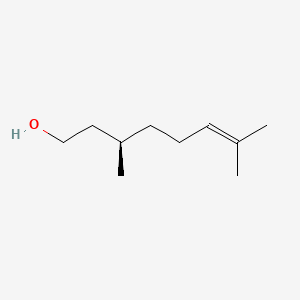| Authors | Title | Published | Journal | PubMed Link |
|---|---|---|---|---|
| pmid:15093616 | ||||
| pmid:10930295 | ||||
| pmid:12409148 | ||||
| pmid:10860808 | ||||
| pmid:10797310 | ||||
| pmid:20364865 | ||||
| pmid:20205230 | ||||
| pmid:20127888 | ||||
| pmid:20074740 | ||||
| pmid:19729299 | ||||
| pmid:17283654 | ||||
| pmid:17126345 | ||||
| pmid:17125777 | ||||
| pmid:17028875 | ||||
| pmid:16716369 | ||||
| pmid:16683937 | ||||
| pmid:10677596 | ||||
| pmid:12507867 | ||||
| pmid:11743780 | ||||
| pmid:11683833 | ||||
| pmid:11521400 | ||||
| pmid:11439452 | ||||
| pmid:19803519 | ||||
| pmid:17295511 | ||||
| pmid:23913545 | ||||
| pmid:22819928 | ||||
| pmid:21683698 | ||||
| pmid:15907798 | ||||
| pmid:15522818 | ||||
| pmid:15494195 | ||||
| pmid:15363973 | ||||
| pmid:15261765 | ||||
| pmid:12423404 | ||||
| pmid:15257206 | ||||
| pmid:15211358 | ||||
| pmid:10864453 | ||||
| pmid:15522829 | ||||
| pmid:8914265 | ||||
| pmid:12236678 | ||||
| pmid:20014855 | ||||
| Nagataki M et al. | Evidence that PAR2-triggered prostaglandin E2 (PGE2) formation involves the ERK-cytosolic phospholipase A2-COX-1-microsomal PGE synthase-1 cascade in human lung epithelial cells. | Cell Biochem. Funct. | pmid:17708577 | |
| pmid: | ||||
| Bozza PT and Weller PF | Arachidonyl trifluoromethyl ketone induces lipid body formation in leukocytes. | Prostaglandins Leukot. Essent. Fatty Acids | pmid:11418016 | |
| Fall RR et al. | Enzyme recruitment allows the biodegradation of recalcitrant branched hydrocarbons by Pseudomonas citronellolis. | 1979 | Appl. Environ. Microbiol. | pmid:539823 |
| Kostrodymov NN | [Experimental characteristics of the biological action of synthetic perfumes]. | 1981 | Gig Sanit | pmid:7297864 |
| Taylor WG and Schreck CE | Chiral-phase capillary gas chromatography and mosquito repellent activity of some oxazolidine derivatives of (+)- and (-)-citronellol. | 1985 | J Pharm Sci | pmid:2862274 |
| Rudzki E and Grzywa Z | The value of a mixture of cassia and citronella oils for detection of hypersensitivity of essential oils. | 1985 | Derm Beruf Umwelt | pmid:4006749 |
| Popják G and Hadley C | Inhibition of liver prenyltransferase by citronellyl and geranyl phosphonate and phosphonylphosphate. | 1985 | J. Lipid Res. | pmid:4067435 |
| Kostrodymov NN and Parfent'ev NA | [Method for studying the function of the olfactory analyzer in white rats using the respiratory reflex]. | 1986 | Gig Sanit | pmid:3758711 |
| Kostrodymov NN | [Rapid method for studying the sexual behavior of male white rats in hygiene research]. | 1986 | Gig Sanit | pmid:3949208 |
beta-Citronellol
Beta-citronellol is a lipid of Prenol Lipids (PR) class. The involved functions are known as Glycolysis.
Cross Reference
Introduction
To understand associated biological information of beta-Citronellol, we collected biological information of abnormalities, associated pathways, cellular/molecular locations, biological functions, related genes/proteins, lipids and common seen animal/experimental models with organized paragraphs from literatures.
What diseases are associated with beta-Citronellol?
There are no associated biomedical information in the current reference collection.
No disease MeSH terms mapped to the current reference collection.
PubChem Associated disorders and diseases
What pathways are associated with beta-Citronellol
There are no associated biomedical information in the current reference collection.
PubChem Biomolecular Interactions and Pathways
Link to PubChem Biomolecular Interactions and PathwaysWhat cellular locations are associated with beta-Citronellol?
There are no associated biomedical information in the current reference collection.
What functions are associated with beta-Citronellol?
Related references are published most in these journals:
| Function | Cross reference | Weighted score | Related literatures |
|---|
What lipids are associated with beta-Citronellol?
There are no associated biomedical information in the current reference collection.
What genes are associated with beta-Citronellol?
There are no associated biomedical information in the current reference collection.
What common seen animal models are associated with beta-Citronellol?
There are no associated biomedical information in the current reference collection.
